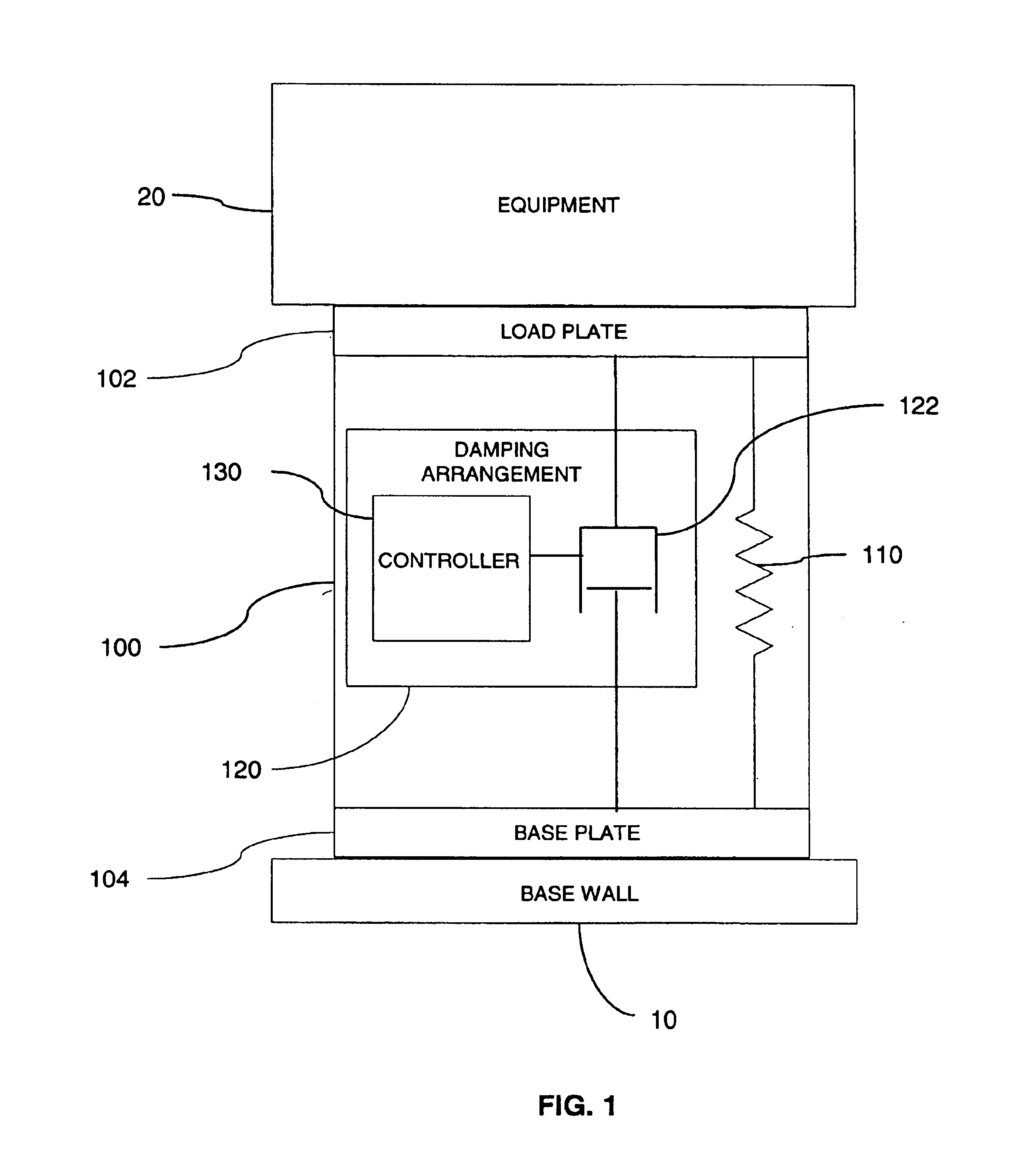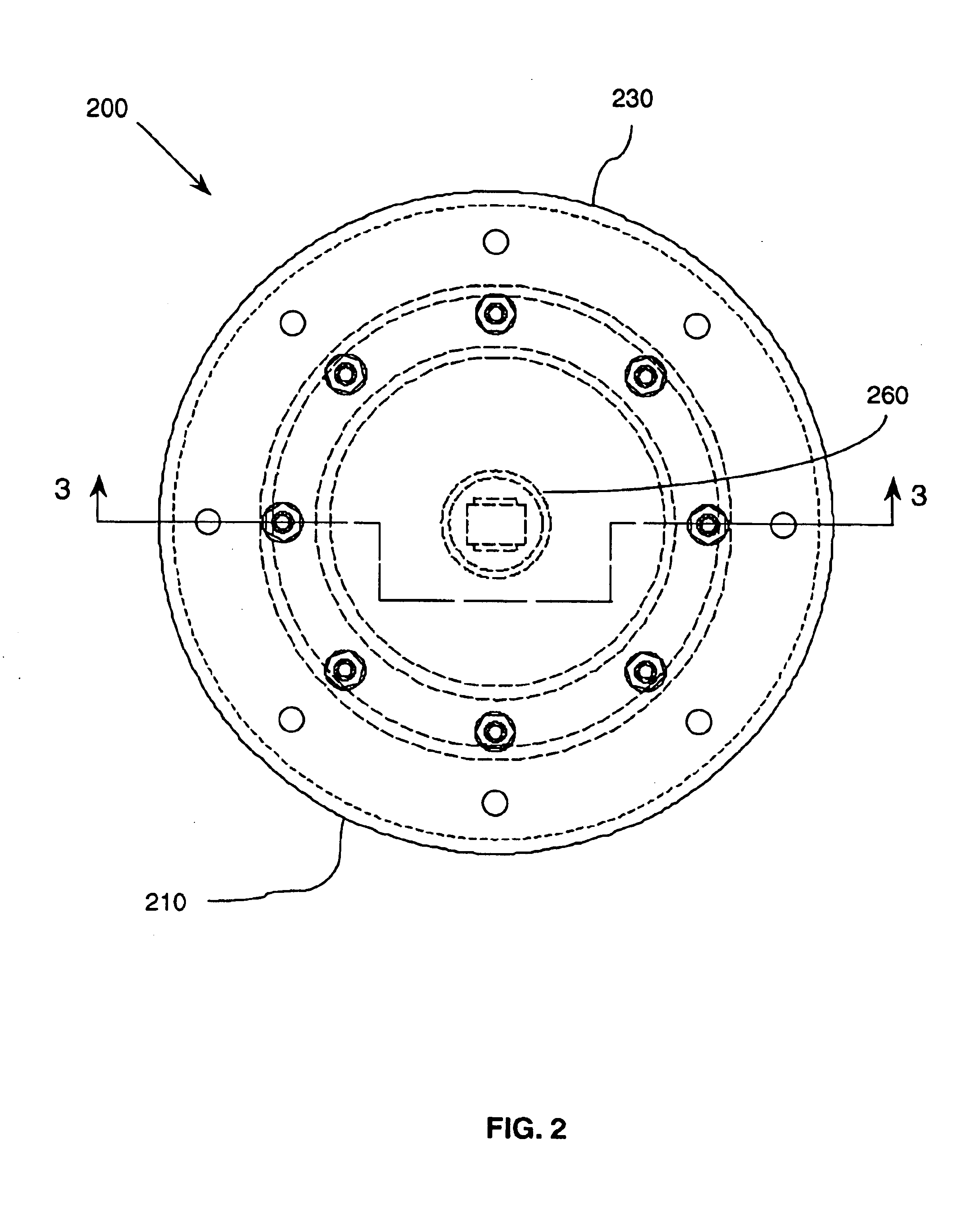Shock, vibration and acoustic isolation system
a technology of shock isolation and vibration, applied in the field of shock isolation systems, can solve the problems of significant cost, military equipment, and significant delay in the deployment of state-of-the-art technologies
- Summary
- Abstract
- Description
- Claims
- Application Information
AI Technical Summary
Problems solved by technology
Method used
Image
Examples
Embodiment Construction
[0028]Shipboard systems are subject to multiple vibratory and shock inputs. In such environments, semi-active isolation systems may be more successful than a passive system. A semi-active isolation system can be designed to simultaneously isolate equipment from many combined and varying inputs. The present invention contemplates the combination of a semi-active damper with a passive spring element to provide an isolation system that performs well as both a vibration isolator and a shock isolator.
[0029]Combining shock and vibration isolation into a single package is highly beneficial in that the single combined isolation system replaces two separate systems. This can significantly reduce weight and increase available volume, which is particularly important in submarine applications where space is limited. Also, with varying and diverse inputs, a combined semi-active / passive isolation system can be designed to perform better than separate passive shock and vibration isolation systems ...
PUM
 Login to View More
Login to View More Abstract
Description
Claims
Application Information
 Login to View More
Login to View More - R&D
- Intellectual Property
- Life Sciences
- Materials
- Tech Scout
- Unparalleled Data Quality
- Higher Quality Content
- 60% Fewer Hallucinations
Browse by: Latest US Patents, China's latest patents, Technical Efficacy Thesaurus, Application Domain, Technology Topic, Popular Technical Reports.
© 2025 PatSnap. All rights reserved.Legal|Privacy policy|Modern Slavery Act Transparency Statement|Sitemap|About US| Contact US: help@patsnap.com



